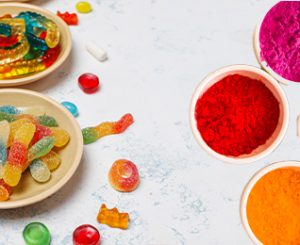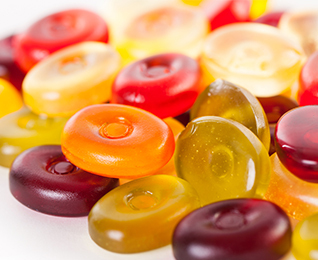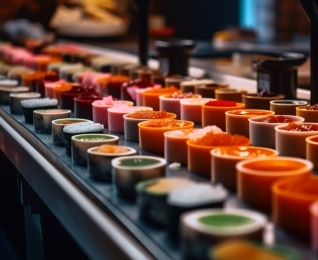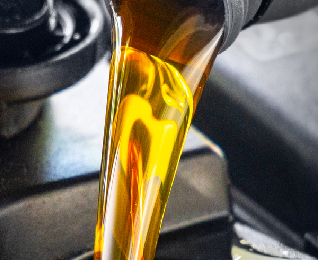Presentation is the key in the food industry...
Menu

Applications of Solvent Dyes
Solvent dyes are one of the many types of colourants used worldwide to impart colour onto materials and objects. This type of dye is called solvent dye as it has the property of being soluble in organic solvents. On the other hand, it is insoluble in water.
Technically, solvent dyes are soluble in non-polar mediums and solvents. This categorization refers to the solvent’s structure, chemical makeup, and charge that decides and identifies the types of substances and materials it can dissolve. Non-polar solvents are those which contain bonds between atoms with similar electronegativities, e.g., carbon and hydrogen. This is why solvent dyes are beneficial for colouring hydrocarbons and fuels.
A few types of organic solvents in which this dye can be dissolved are alcohols, ethers, ketones, aliphatic hydrocarbons, aromatic hydrocarbons, oils, fats, waxes, and chlorinated hydrocarbons. Other non-polar solvents include alkanes (like pentane, hexane, and heptane), aromatics (like benzene, toluene, and xylene), acetic acid, chloroform, diethyl ether, ethyl acetate, methylene chloride, pyridine, etc.
Applications and Uses of Solvent Dyes
Solvent dyes have a wide range of applications and use across many industries. Mainly solvent dyes have more uses in the plastic and petroleum industries as these dyes have substantial benefits in fuels, oil lubricants, grease, wax, and plastics colourations.
Here are a few popular solvent dyes with their applications.
- Solvent Yellow 124 [ C.I. No – 111155] This yellow azo dye is a marker dye as it is mainly used as a fuel dye in the European Union. It is usually to impart green colour to diesel oil. This is primarily done to stop the misuse of low-tax diesel. This green colour identifies that diesel as low-tax fuel. It is also called the Euromarker. Some other applications include imparting colour to materials like plastic, polymer, rubber, fibre, wax, paint, oil, lubricants, and printer inks.
- Solvent Red 26 [ C.I. No – 26120] This solvent dye is a purplish red synthetic azo dye soluble in oil but insoluble in water. It is a general fuel dye used to distinguish fuels in the USA. The EPA and the US IRS use it to identify fuels with a higher sulphur content and differentiate low-taxed or tax-exempt heating oil from car diesel fuel, respectively. Other uses of this dye are to give colour to fat, oil, wax, and acrylic resin. It may also be applied in the production of paint coatings as well as ink coatings. These inks are also used in proton radiation therapy.
- Solvent Violet 13 [ C.I. No – 60725] This is a bright bluish violet synthetic anthraquinone dye. This dye gives colour to hydrocarbon products and materials like solvents, petrol, thermoplastics, polystyrene, hard polystyrene, various resins, plastics, PS, HIPS, ABS, PC, RPVC, PMMA, SAN, AS, PET, etc. It is also to be used in terylene protoplasmic colouring. This dye is also used to colour cosmetic products meant for hair and skin. It is also used to dye synthetic textile fibres.
- Solvent Blue 36 [ C.I. No – 61551] This anthraquinone dye has applications in industries like Paint, Petroleum & Plastic. This dye is generally used to give colour to products, materials, and substances like acrylic resins, polystyrene, oils, inks, etc. It is also used to make fireworks, as this dye gives the smoke a bluish-violet colour.
- Solvent Red 164 [ C.I. No – N.A.] Like Solvent Yellow 164, this dye is also a fuel dye. Its primary use is to identify fuels with a greater sulphur content and to differentiate low-taxed heating oil from diesel fuel. Some hydraulic fluids and other hydrocarbons, mostly gasoline, are also dyed with them. It is also applied in the colouration of materials like polystyrene, ABS resin, polymethyl methacrylate resin, acetate, PVC, etc. This dye is also used in polyester fibre protoplasmic colouring.
- Solvent Orange 60 [ C.I. No – 564100] This dye has various applications due to its properties of high fastness and good temperature resistance. This dye gives colour to polystyrene, PS, HIPS, ABS, PC, RPVC, PMMA, SAN, AS, PET, resins, polymethylmethacrylate, unplasticized PVC, and other kinds of plastics. This dye is also used in the colouring process of estron, Capron, terylene, polyester, and PA6 fibre.
- Solvent Red 135 [ C.I. No – 564120] This dye imparts a yellowish-red shade. It has great heat resistance, light and weather resistance, excellent fastness to migrate, and high tinting strength. It is an effective dye for high-performance products like PET blowing and spin dyeing. It gives colour to materials like polystyrene, ABS resin, polymethylmethacrylate, cellulose acetate, rigid PVC, rubber, and plastic rubber. It is also used in polyester fibre protoplasmic colouring and terylene protoplasmic colouring.
Types of Solvent Dyes
The many industries that use solvent dyes use a wide range of different types of dyes manufactured and produced by solvent dyes manufacturers. Many different colors exist, like Solvent Yellow 2, Solvent Red 23, Solvent Blue 4, Solvent Orange 7, and many more. But these colours are mainly grouped into a few general categories, each containing more specific colours according to needs and uses. These groups are:
- Solvent Black
- Solvent Blue
- Solvent Brown
- Solvent Green
- Solvent Orange
- Solvent Red
- Solvent Violet
- Solvent Yellow
Features of Solvent Dyes
- Solvent dyes possess high heat stability, allowing them to retain their physical and chemical characteristics under high-heat applications. This is why these dyes are perfect for use in fuels, automotive lubricants, and transmission fluids.
- These dyes are also of high concentration. This means they can be used in very low and minimal amounts to impart colour. This leads to zero changes to the product/material’s characteristics.
- Due to their high thermal resistance, these dyes also possess resistance against corrosion.
- These dyes have good light fastness, and in terms of colour, their quality and consistency are terrific.
We at Saujanya Exports are solvent dyes exporters and organic pigment powder manufacturers. We also manufacture and export many other types of dyes and pigments, and we are one of India’s leading manufacturers, exporters, and suppliers of dyes and pigments.
To take advantage of our high-quality products and to benefit from our 50+ years of experience in this field, visit us at https://www.saujanyaexports.com/ or write to us https://www.saujanyaexports.com/contact/
Recent Post
Synthetic vs Natural Food Colours: All you need to know!
January 31, 2025
The Rise of Natural Food Colours
January 02, 2025
Exploring Natural Colourants
December 15, 2024
Applications of Solvent Dyes
November 28, 2022
How are Fast Bases used in Textile Industry?
November 09, 2022
Synthetic Food Colours and Applications
November 01, 2022







